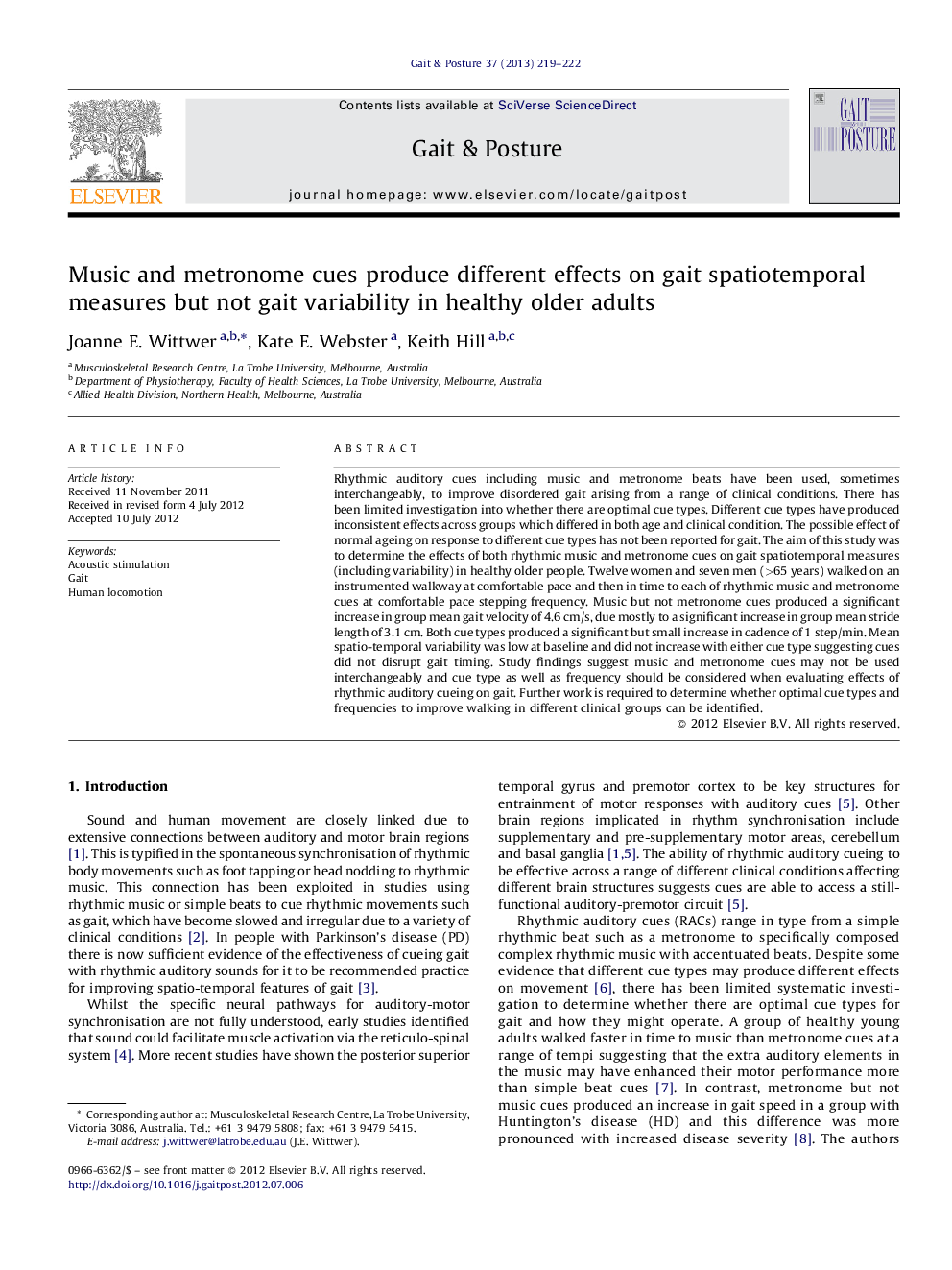| کد مقاله | کد نشریه | سال انتشار | مقاله انگلیسی | نسخه تمام متن |
|---|---|---|---|---|
| 6207934 | 1265667 | 2013 | 4 صفحه PDF | دانلود رایگان |
Rhythmic auditory cues including music and metronome beats have been used, sometimes interchangeably, to improve disordered gait arising from a range of clinical conditions. There has been limited investigation into whether there are optimal cue types. Different cue types have produced inconsistent effects across groups which differed in both age and clinical condition. The possible effect of normal ageing on response to different cue types has not been reported for gait. The aim of this study was to determine the effects of both rhythmic music and metronome cues on gait spatiotemporal measures (including variability) in healthy older people. Twelve women and seven men (>65 years) walked on an instrumented walkway at comfortable pace and then in time to each of rhythmic music and metronome cues at comfortable pace stepping frequency. Music but not metronome cues produced a significant increase in group mean gait velocity of 4.6Â cm/s, due mostly to a significant increase in group mean stride length of 3.1Â cm. Both cue types produced a significant but small increase in cadence of 1Â step/min. Mean spatio-temporal variability was low at baseline and did not increase with either cue type suggesting cues did not disrupt gait timing. Study findings suggest music and metronome cues may not be used interchangeably and cue type as well as frequency should be considered when evaluating effects of rhythmic auditory cueing on gait. Further work is required to determine whether optimal cue types and frequencies to improve walking in different clinical groups can be identified.
⺠The effect on gait of two different rhythmic auditory cues was studied in healthy older people. ⺠Compared to baseline, gait speed increased with rhythmic music but not metronome cues. ⺠Increased speed with music cues was due mostly to increased stride length. ⺠Spatio-temporal variability was low at baseline and did not increase with either cue. ⺠Different types of rhythmic auditory cue for gait may not be interchangeable.
Journal: Gait & Posture - Volume 37, Issue 2, February 2013, Pages 219-222
